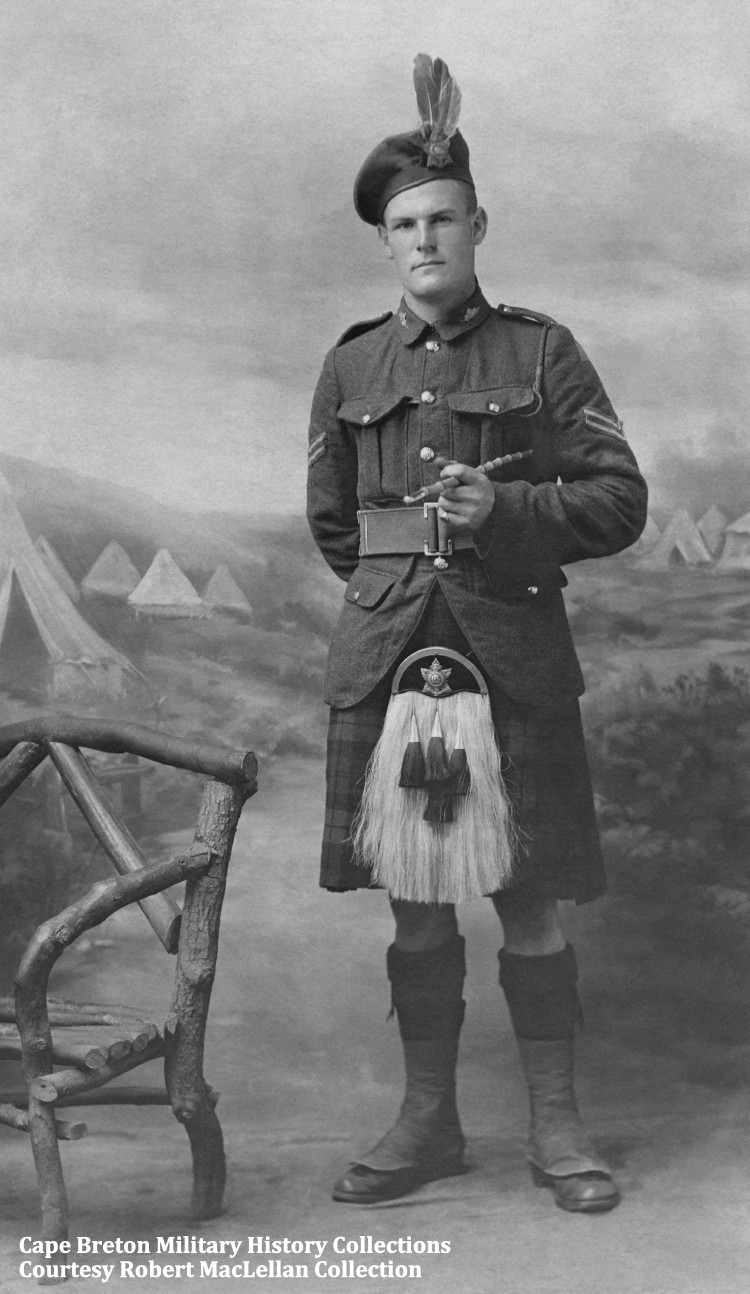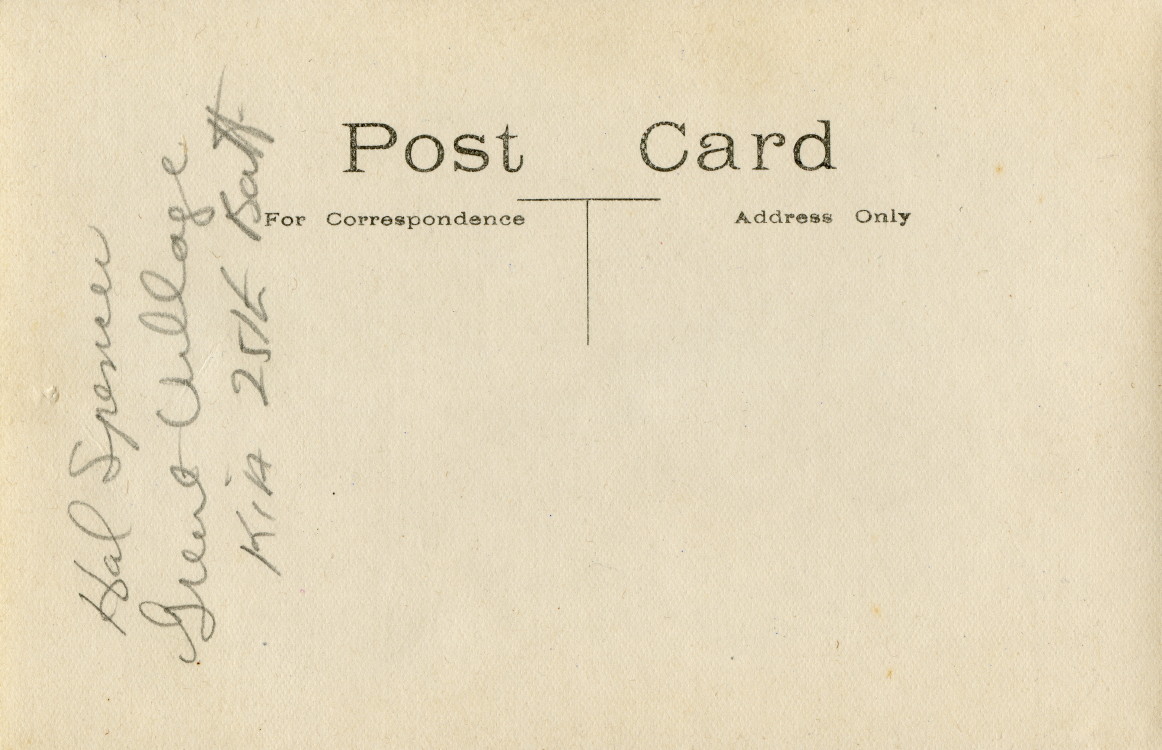Theme Collections
185th Battalion (Cape Breton Highlanders) CEF
Studio Portrait Photos and Personal Profiles - First World War
Photo Postcard
One studio portrait photo postcard of Cpl. Harold Dougall Spencer of the 185th Battalion, circa 1917.
Cpl. Harold Dougall Spencer
185th Battalion (Cape Breton Highlanders)
England
Circa 1917
Cpl. Spencer stands in front of a photo studio backdrop of a tented encampment. He wears a khaki balmoral with cap badge and full height feathers, a highland cut standard British five button pattern jacket, a 1908 pattern web belt, kilt, and "other ranks" sporran. On his legs are khaki hose tops worn with khaki spats. He holds a swagger stick.
Photographer: Unknown
Ref. Number: 0-4 (2-1-2-1.3)
Image Information: Scan of original photo postcard
Source: Robert MacLellan Collection
_________________________________________
Short Biography and Record of Service
Pte. Harold Dougall Spencer
Service Number 901191
Killed in Action June 13, 1918
25th Battalion (Nova Scotia Rifles)
Harold Dougall Spencer was born and raised in the rural community of Great Village in Colchester County, NS. Born on September 7, 1892, he was the son of James Mitchell and Ada Helen Spencer. Harold was single and working in the lumber industry as a millman, when on March 11, 1916, he went to Truro, NS, and enlisted as a private in the 193rd Battalion (Nova Scotia Highlanders).
At the time of his enlistment, the 193rd Battalion was headquartered in Truro. Two months later, the battalion relocated to the large pre-war military training camp at Aldershot, NS, where they united with their three sister battalions of the newly formed Nova Scotia Highland Brigade. The four battalions trained together at Aldershot throughout the summer and early fall. In early October, the whole brigade entrained for Halifax, where they boarded the troopship RMS Olympic, sister ship of the Titanic, and on October 13, 1916, set sail for England. Harold held the rank of acting lance corporal.
After disembarking in England, the men were established at Witley Camp in southern England. Word soon arrived that the Nova Scotia Highland Brigade would be dissolved. Two of the battalions, including Harold’s 193rd Battalion, were to be broken up with the men to be used for reinforcements for other Canadian units. As a result, on December 29, 1916, Harold was transferred to the 185th Battalion (Cape Breton Highlanders) who were also at Witley Camp. The battalion was one of the four battalions of the former Nova Scotia Highland Brigade and were still earmarked to cross the channel as a unit. Upon joining the 185th Battalion, Harold, at his own request, reverted to the rank of private, but on April 24, 1917, he was appointed acting corporal. The 185th Battalion trained in England throughout 1917 but in early 1918, they were also ordered to be disbanded to provide badly needed reinforcements for Canadian units already at the front.
On February 23, 1918, again at his own request, Harold reverted to the rank of private and was posted to the 17th Reserve Battalion at Bramshott. On May 10, 1918, he proceeded to France as a reinforcement for the 25th Battalion (Nova Scotia Rifles). The 25th Battalion had been mobilized in Halifax, NS, and had raised recruits from across Nova Scotia. They had been at the front since 1915. Harold joined the 25th Battalion in the field on June 10, 1918.
Harold was killed in action on June 13, 1918, only three days after joining his new unit. At the time, the 25th Battalion held a section of the line near Neuville Vitasse in France. On the previous day the weather was fine and there was heavy shelling back and forth between the Canadian and German lines. The heavy German shelling extended into the early morning hours of June 13th at which time the 25th Battalion also carried out a major night raid into the German lines which netted prisoners and killed many of the enemy. Details of Harold’s death are not known but he was killed during these actions that day. He was 25 years old.
Harold Spencer was laid to rest at Wailly Orchard Cemetery, in Wailly, Pas de Calais, France.

